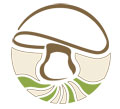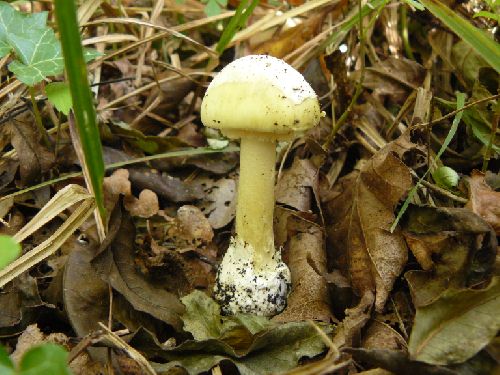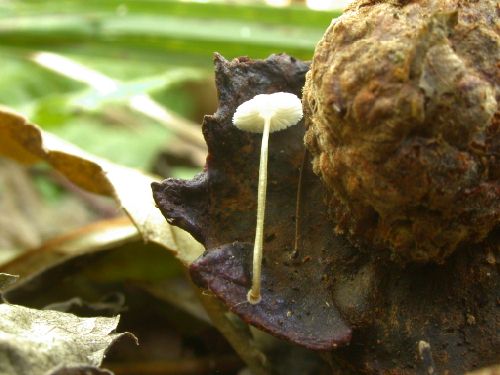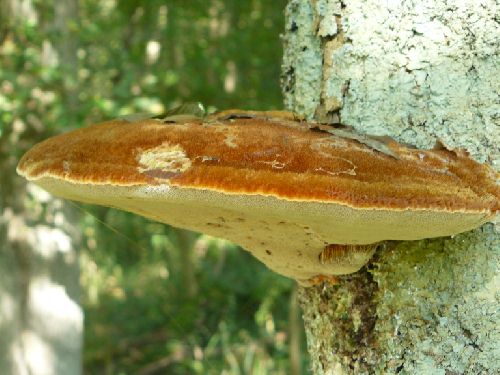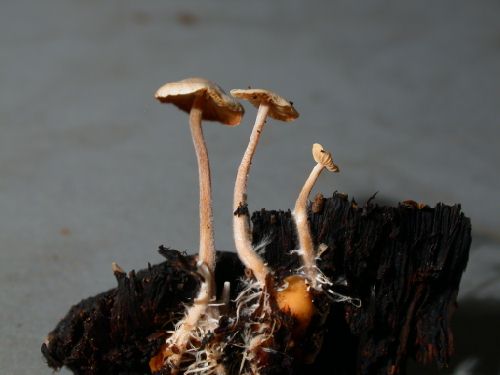Leckford JSL Estate
Sun 27 Sep 2009
Field event ID HF0914
OS Grid areas: SU3637
Weather: The dry conditions that have been present for most of September were still persisting.
New Records:
Second British record: Mycena cecidiophila, Seticyphella niveola
New to Hampshire: Epithele typhae, Entoloma rusticoides, Marasmius limosus
New to VC12: Tubulicrinis glebosus
New to HFRG: Psathyrella leucotephra
Report: This was an eventful day that only just happened. Our thanks must go to Glynne Evans, Chairman of the John Spedan Lewis Trust, who not only acted as our guide but also rescued the foray at the last minute when yours truly had failed to finalise the details for the visit with the Estate Office. The continuing dry weather forced us to head for a patch of wood in the wettest part of the Estate nestling amongst the various waterways of the river Test, an area which in the past had seen members sink to their knees in the bog! This turned out to be a good choice as we not only found eighty species but also found several new species for the group and amazingly Sue found two species which have only one previous British record, again found by Sue and Alan. Mycena cecidiophila, a small white mycena, is found on knopper galls on the ground, perhaps a substrate that is not regularly examined. If edible fungi were thin on the ground the poisonous ones were not with both Galerina marginata (Funeral Bell), which caused much interest amongst the younger forayers, and Amanita phalloides (Death Cap) both in evidence. Glynne showed us a very photogenic fruitbody of Inonotus hispidus situated, as usual, eight feet up an ash tree, a position which led to three members of the group returning two days later with step ladder to get a better view! Despite the bog living up to its reputation by enticing one young forayer to sample the feeling of sinking in mud the day was a great success.
Species list: Amanita phalloides, Armillaria ostoyae, Arrhenia retiruga, Bisporella sulfurina, Bolbitius reticulatus, Calyptella capula, Ceriporia purpurea, Ceriporiopsis pannocincta, Chlorociboria aeruginascens, Chromocyphella muscicola, Ciboria batschiana, Collybia cookei, Coniophora puteana, Crepidotus applanatus var. applanatus, Crepidotus mollis, Cylindrobasidium laeve, Daedaleopsis confragosa, Entoloma hebes, Entoloma rusticoides, Epithele typhae, Fuscoporia ferrea, Galerina marginata, Ganoderma australe, Geoglossum umbratile, Gyrophanopsis polonensis, Helvella atra, Hemimycena tortuosa, Henningsomyces candidus, Hymenoscyphus fructigenus, Hypholoma fasciculare var. fasciculare, Inonotus hispidus, Kuehneromyces mutabilis, Laccaria amethystina, Laccaria laccata, Laccaria tortilis, Lactarius glyciosmus, Lactarius pyrogalus, Lactarius quietus, Lactarius tabidus, Lentinellus cochleatus, Leotia lubrica, Marasmius limosus, Mensularia radiata, Mycena acicula, Mycena aetites, Mycena cecidiophila, Mycena haematopus, Mycena vitilis, Mycoacia uda, Paxillus involutus, Peniophora quercina, Peniophorella praetermissa, Phanerochaete velutina, Phellinus igniarius, Phlebia radiata, Physisporinus sanguinolentus, Piptoporus betulinus, Pluteus podospileus, Pluteus salicinus, Polyporus leptocephalus, Postia subcaesia, Psathyrella leucotephra, Psathyrella spadicea, Rickenella swartzii, Schizopora paradoxa, Scopuloides rimosa, Scutellinia scutellata, Seticyphella niveola, Skeletocutis nivea, Steccherinum fimbriatum, Steccherinum ochraceum, Stereum gausapatum, Stereum hirsutum, Stereum subtomentosum, Tarzetta cupularis, Trametes versicolor, Trechispora farinacea, Tremella mesenterica, Tubulicrinis glebulosus, Typhula erythropus, Xylaria hypoxylon, Xylaria longipes
